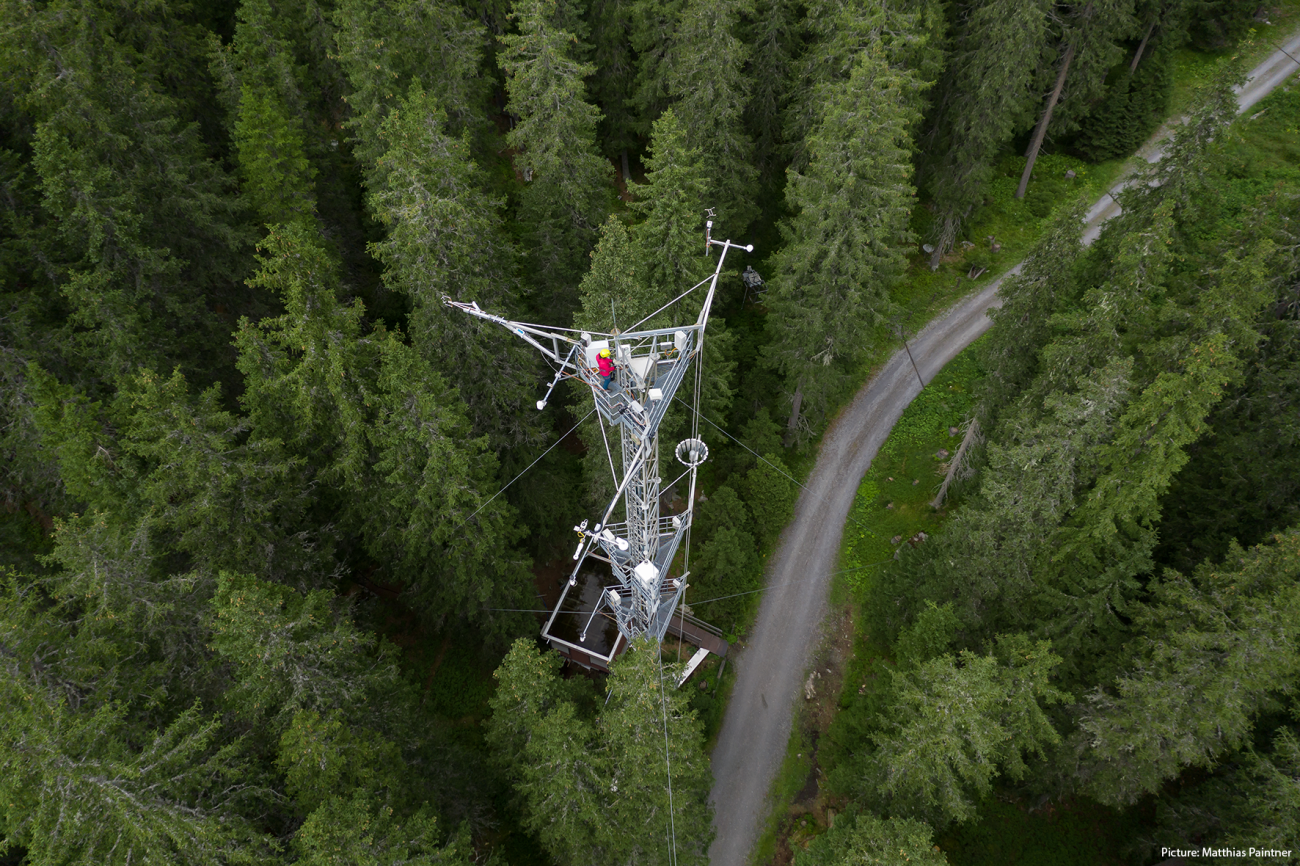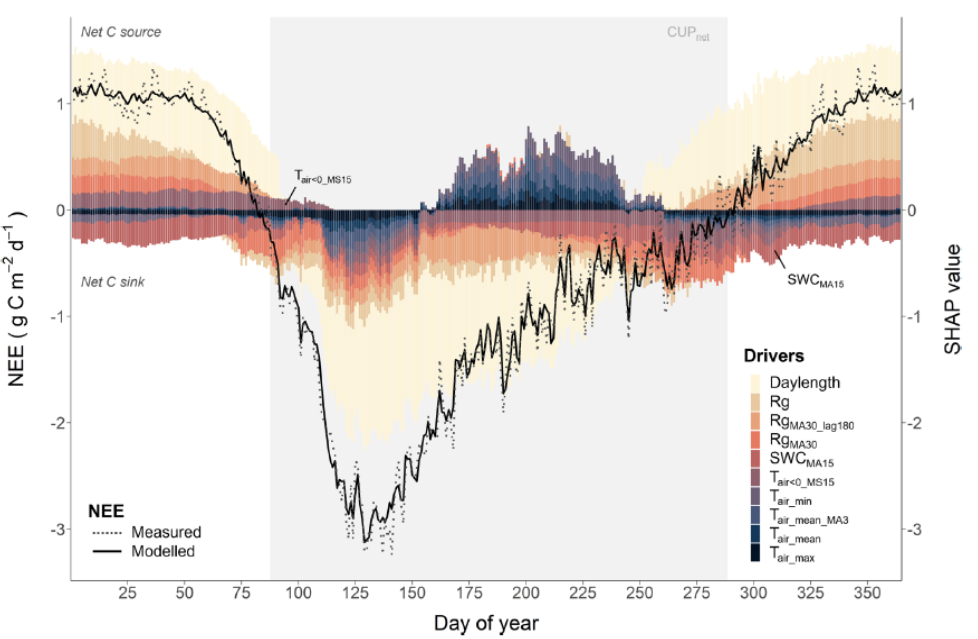
Data from the ICOS-CH station Davos (CH-Dav) show that the carbon sink of a Norway spruce forest is far from certain in the future.
A study using data from the ICOS Class 1 Ecosystem station Davos, published earlier this year in Global Change Biology, found that the Norway spruce forest in Davos-Seehornwald, located at 1639 m a.s.l, was a carbon sink during the last 26 years despite its high age of 120 years on average. However, air temperature increasingly limited its carbon sink behaviour, suggesting an uncertain future of this forest’s C sink behaviour.
“We wanted to pull together the entire dataset, pre-ICOS and ICOS, processed with the same procedures, to analyse long- term trends in net ecosystem CO2 exchange (NEE) of our Norway spruce forest,” says Dr. Luana Krebs, who led the study as a doctoral student at ETH Zurich, now a postdoc at Stanford University. “While we found annual C sinks increased from 1997 to 2012, they levelled off between 2012 and 2015, followed by a decline. Although annual NEE was strongly related to the length of the net carbon uptake period, the start of season, and end of season, we did not detect any significant trends in these variables. This indicated ecophysiological acclimation to changing environmental conditions over the past 26 years.”
Davos was labelled as ICOS Class 1 Ecosystem station in 2019. But CO2 fluxes have been measured since 1997, and high quality environmental data were available as well. “These data were crucial for our analyses. We combined them with sophisticated machine learning approaches, in particular with “SHAP” analyses, which allowed us to determine not only the most relevant drivers but also how driver contributions changed over time. We found that the spruce forest in Davos benefited from higher temperatures between autumn and spring, with higher net C uptake during favourable conditions and reduced C loss when winter photosynthesis compensated respiration. However, the high summer temperatures increasingly limited NEE over time. This can make it difficult for this subalpine spruce forest in the future.”

Using pre-ICOS data at labelled ICOS sites has large benefits for the scientific community as well as for stakeholders. Only with such long time series of flux data, particularly when combined with powerful machine learning approaches which can handle complex, interacting drivers, can we detect the slow responses of forests to climate change. Such data not only increase our understanding of forest C dynamics but also provide the scientific evidence for mitigation strategies, such as nature-based solutions.
Read the full article: Krebs L, Hörtnagl L, Scapucci L, Gharun M, Feigenwinter I, Buchmann N. Net ecosystem CO2 exchange of a subalpine spruce forest in Switzerland over 26 years: Effects of phenology and contributions of abiotic drivers at daily time scales. Global Change Biology 31:e70371.
https://onlinelibrary.wiley.com/doi/10.1111/gcb.70371